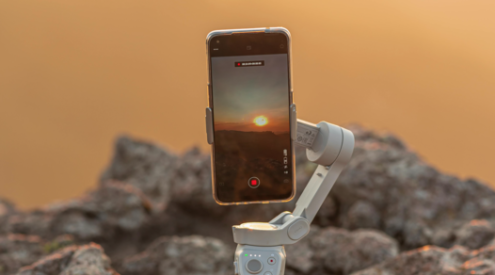If you’re just starting out, you’ve probably been tempted by one of those all-in-one digital SLR camera kits currently available from some of the bigger camera marques. While these look amazing, often including a digital body along with a couple of lenses, you should consider your options before leaping in.
Many new photographers don’t realise there are vast differences in the quality of lenses and even the biggest camera brands make some pretty ordinary (read cheap and nasty) lenses.
The problem with all-in-one kits is that to entice buyers, manufacturers tend to dress up a relatively good quality mid- or entry-level body in these kits with second-rate lenses (although this may not apply in all cases).
At first glance, you seem to be getting a great buy, but in reality it doesn’t take an enthusiast long to tire of the poorer-quality glass. Good lenses tend to outlast camera bodies these days, so it’s worth waiting to buy quality.
In my opinion, it’s better to start slower with fewer options anyway. One thing that plagues new photographers is the extensive range of options modern cameras offer. There are a gazillion programmes, four different focusing areas, three light-metre settings – and it goes on and on. Why complicate the learning process even further with multiple lenses and a wide range of focal lengths?
If I think back to my early days, I had a very simple camera with one or two functions (it was a film body) and a 50-millimetre lens. That was it. Everything I needed to achieve I did with this lens. And I suppose that made me think – made me resourceful.
Sometimes I wonder if modern beginners are so busy thinking about which of the many options to pick, they forget to think about the photograph at all. Welcome to the world of snapshot. Not that there’s anything wrong with snaps, if that’s all you want to achieve.
At first, all-in-one kits may seem to be the answer to your photographic dreams, but in a hobby often fixated by its equipment, less is very often more.
Learn camera lingo
VR (Nikon) and IS (Canon)
Vibration Resistance and Image Stabilisation are two relatively new technologies, which help to reduce the effects of camera shake, resulting in sharper images.
Focal length
Essentially the magnification of the lens: 8 mm is a very wide angle, while 600 mm is very narrow and magnified.
Zoom lenses
This term is often incorrectly used to describe telephoto lenses (lenses with focal lengths longer than say 100 mm – giving greater magnification); in reality it refers to whether there are a range of focal lengths or whether the lens is a fixed focal length.
Maximum aperture
Also referred to as f-stop. Lenses pass light to the camera through an adjustable aperture; the wider the aperture, the smaller the f-stop and the more light is let in. Lenses with large apertures (such as f1.4 to f2.8 lenses) are referred to as fast lenses.
Prime lenses
These are good-quality, fixed-focal-length lenses (i.e. they don’t zoom). They result in extremely sharp images and are often the fastest lenses available.
Macro lenses
Macro refers to the ability of the lens to focus on subjects which are very close. Typically these are used for photographing small objects (coins, beetles, etc), but can also produce pleasing results when used for portraits.
















